Discover 8 hidden attractions, cool sights, and unusual things to do in Ludlow (United Kingdom). Don't miss out on these must-see attractions: Stokesay Castle, Ludlow Castle, and St Laurence's Church. Also, be sure to include Titterstone Clee Hill in your itinerary.
Below, you can find the list of the most amazing places you should visit in Ludlow (England).
Table of Contents
Stokesay Castle

Castle in England. Stokesay Castle is one of the finest surviving fortified manor houses in England, and situated at Stokesay in Shropshire. It was largely built in its present form in the late 13th century by Laurence de Ludlow, on the earlier castle founded by its original owners the de Lacy family, from whom it passed to their de Verdun heirs, who retained feudal overlordship of Stokesay until at least 1317. Laurence 'of' Ludlow was one of the leading wool merchants in England, who intended it to form a secure private house and generate income as a commercial estate. Laurence's descendants continued to own the castle until the 16th century, when it passed through various private owners. By the time of the outbreak of the English Civil War in 1641, Stokesay was owned by William Craven, the first Earl of Craven and a supporter of King Charles I. After the Royalist war effort collapsed in 1645, Parliamentary forces besieged the castle in June and quickly forced its garrison to surrender. Parliament ordered the property to be slighted, but only minor damage was done to the walls, allowing Stokesay to continue to be used as a house by the Baldwyn family until the end of the 17th century.
In the 18th century the Baldwyns rented the castle out for a range of agricultural and manufacturing purposes. It fell into disrepair, and the antiquarian John Britton noted during his visit in 1813 that it had been "abandoned to neglect, and rapidly advancing to ruin". Restoration work was carried out in the 1830s and 1850s by William Craven, the second Earl of Craven. In 1869 the Craven estate, then heavily in debt, was sold to the wealthy industrialist John Derby Allcroft who paid for another round of extensive restoration during the 1870s. Both of these owners attempted to limit any alterations to the existing buildings during their conservation work, which was unusual for this period. The castle became a popular location for tourists and artists, and was formally opened to paying visitors in 1908.
Allcroft's descendants fell into financial difficulties during the early 20th century, however, and it became increasingly difficult for them to cover the costs of maintaining Stokesay. In 1986 Jewell Magnus-Allcroft finally agreed to place Stokesay Castle into the guardianship of English Heritage, and the castle was left to the organisation on her death in 1992. English Heritage carried out extensive restoration of the castle in the late 1980s. In the 21st century, Stokesay Castle continues to be operated as a tourist attraction, receiving 39,218 visitors in 2010.
Architecturally, Stokesay Castle is "one of the best-preserved medieval fortified manor houses in England", according to historian Henry Summerson. The castle comprises a walled, moated enclosure, with an entrance way through a 17th-century timber and plaster gatehouse. Inside, the courtyard faces a stone hall and solar block, protected by two stone towers. The hall features a 13th-century wooden-beamed ceiling, and 17th-century carved figures ornament the gatehouse and the solar. The castle was never intended to be a serious military fortification, but its style was intended to echo the much larger castles being built by Edward I in North Wales. Originally designed as a prestigious, secure, comfortable home, the castle has changed very little since the 13th century, and is a rare, surviving example of a near complete set of medieval buildings. English Heritage has minimised the amount of interpretative material displayed at the property and kept the castle largely unfurnished.[1]
Address: Nr Craven Arms, Ludlow
Ludlow Castle
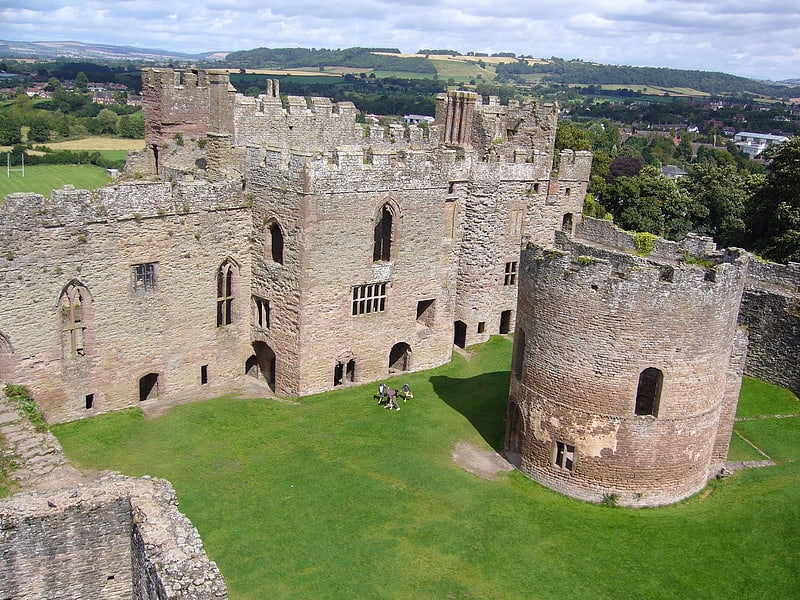
Fine, medieval ruined fortress from 1094. Ludlow Castle is a ruined medieval fortification in the town of the same name in the English county of Shropshire, standing on a promontory overlooking the River Teme. The castle was probably founded by Walter de Lacy after the Norman conquest and was one of the first stone castles to be built in England. During the civil war of the 12th century the castle changed hands several times between the de Lacys and rival claimants, and was further fortified with a Great Tower and a large outer bailey. In the mid-13th century, Ludlow was passed on to Geoffrey de Geneville who rebuilt part of the inner bailey, and the castle played a part in the Second Barons' War. Roger Mortimer acquired the castle in 1301, further extending the internal complex of buildings, and the Mortimer family went on to hold - York- Duke of York|Richard]], the Duke of York, inherited the castle in 1425, and it became an important symbol of Yorkist authority during the Wars of the Roses. When Richard's son, Edward IV, seized the throne in 1461 it passed into the ownership of the Crown. Ludlow Castle was chosen as the seat of the Council in the Marches of Wales, effectively acting as the capital of Wales, and it was extensively renovated throughout the 16th century. By the 17th century the castle was luxuriously appointed, hosting cultural events such as the first performance of John Milton's masque Comus. Ludlow Castle was held by the Royalists during the English Civil War of the 1640s, until it was besieged and taken by a Parliamentarian army in 1646. The contents of the castle were sold off and a garrison was retained there for much of the interregnum.
With the Restoration of 1660, the Council was reestablished and the castle repaired, but Ludlow never recovered from the civil war years and when the Council was finally abolished in 1689 it fell into neglect. Henry, 1st Earl of Powis, leased the property from the Crown in 1772, extensively landscaping the ruins, while his brother-in-law, Edward, 1st Earl of Powis (by the third creation of the Earldom of Powis), bought the castle outright in 1811. A mansion was constructed in the outer bailey but the remainder of the castle was left largely untouched, attracting an increasing number of visitors and becoming a popular location for artists. After 1900, Ludlow Castle was cleared of vegetation and over the course of the century it was extensively repaired by the Powis Estate and government bodies. In the 21st century it is still owned by the Earl of Powis and operated as a tourist attraction.
The architecture of Ludlow reflects its long history, retaining a blend of several styles of building. The castle is approximately 500 by 435 feet (152 by 133 m) in size, covering almost 5 acres (2.0 ha). The outer bailey includes the Castle House building, now used by the Powis Estate as offices and accommodation, while the inner bailey, separated by a trench cut out of the stone, houses the Great Tower, Solar block, Great Hall and Great Chamber block, along with later 16th century additions, as well as a rare, circular chapel, modelled on the shrine in the Church of the Holy Sepulchre. English Heritage notes that the ruins represent "a remarkably complete multi-phase complex" and considers Ludlow to be "one of England's finest castle sites".[2]
Address: Castle Sq, SY8 1AY Ludlow
St Laurence's Church
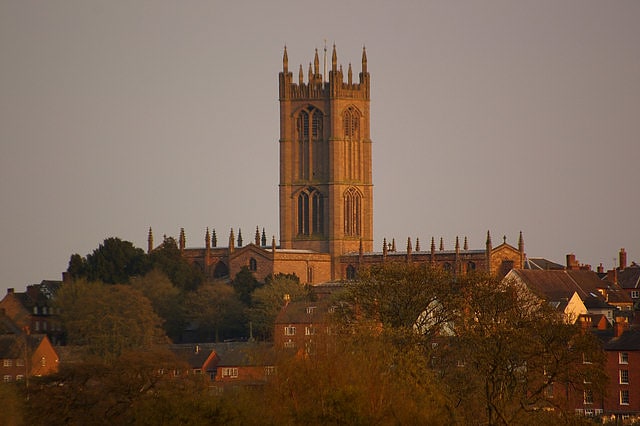
Parish church in Ludlow, England. St Laurence's Church, Ludlow, is a Church of England parish church in Ludlow, Shropshire, England. It is a grade I listed building.
The church is a member of the Greater Churches Group and is the largest parish church in Shropshire. It was one of only 18 churches given a five-star rating in England's Thousand Greatest Churches by Simon Jenkins and is described as the "cathedral of the Marches". It is the 13th most popular free visitor attraction in the West Midlands, with 70,000 visitors per year.[3]
Address: 2 College Street, SY8 1AN Ludlow
Titterstone Clee Hill
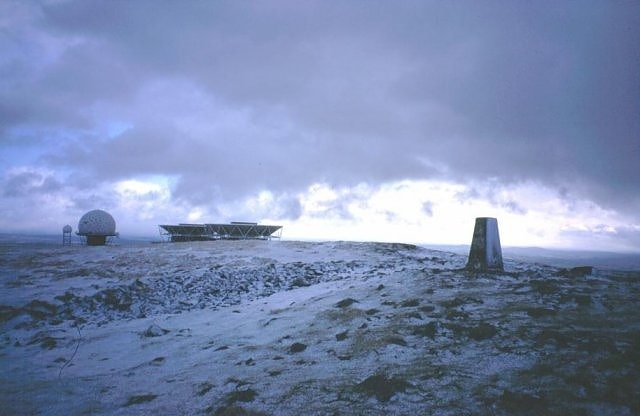
Hill in England. Titterstone Clee Hill, sometimes referred to as Titterstone Clee or Clee Hill, is a prominent hill in the rural English county of Shropshire, rising at the summit to 533 metres above sea level.
It is one of the Clee Hills, in the Shropshire Hills Area of Outstanding Natural Beauty. The nearest town to the hill is Ludlow, which can be seen from parts of Cleehill village.[4]
Burway Bridge
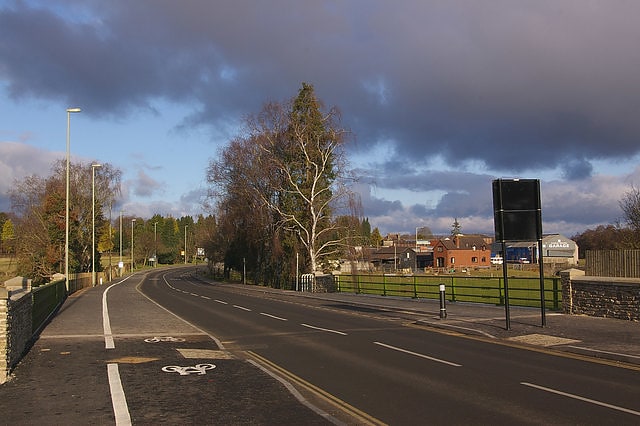
Bridge in the United Kingdom. Burway Bridge is a bridge in Ludlow, Shropshire, England. It takes the B4361 road across the River Corve.[5]
Castle Lodge
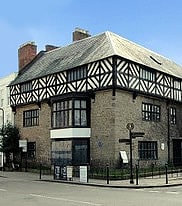
Castle Lodge is a medieval Tudor and Elizabethan architectural transition period house in Ludlow, Shropshire, situated close to Ludlow Castle. Scenes from the 1965 film version of Moll Flanders were shot here. Castle Lodge has one of the largest collections of oak panelling in England and dates from the early 13th century, rebuilt in 1580. In Tudor times it was the home of Elizabeth I's Master of Requests and was once used as a prison.[6]
Address: Castle Square, SY8 1AY Ludlow
Downton Hall
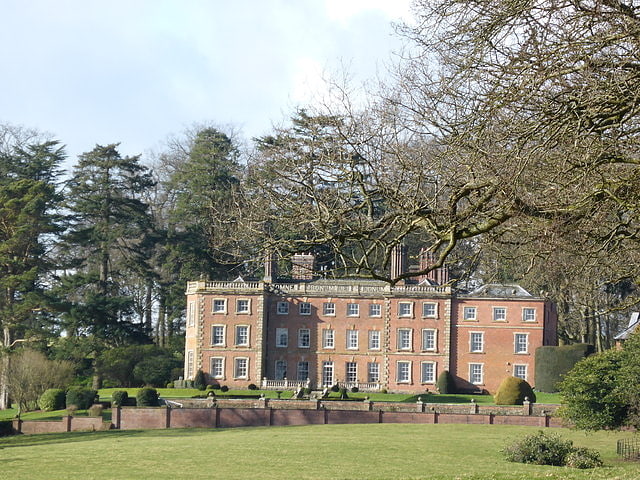
Building in England. Downton Hall is a privately owned 18th-century country house at Stanton Lacy, near Ludlow, Shropshire. It is a Grade II* listed building.
The house was built about 1733 by Wredenhall Pearce, who had inherited the estate in 1731. The new house, designed by William Smith Jr. of Warwick, of three storeys and with a twelve-bay frontage carrying a balustraded parapet, boasts an unusual circular entrance hall with Ionic columns and a honeysuckle frieze.
In 1781 Catherine Hall, daughter and heir of William Pearce Hall married Charles William Rouse-Boughton MP (see Boughton Baronets). Improvements to the house in 1824 included a new entrance front, designed by architect Edward Haycock, with a Doric style portico.
Sir Charles Henry Rouse-Boughton was resident in 1881 with his family and nine domestic servants. Following the death of the last Baronet in 1963 his daughter Miss MF Rouse-Boughton continued to live at the Hall.[7]
Ludlow College
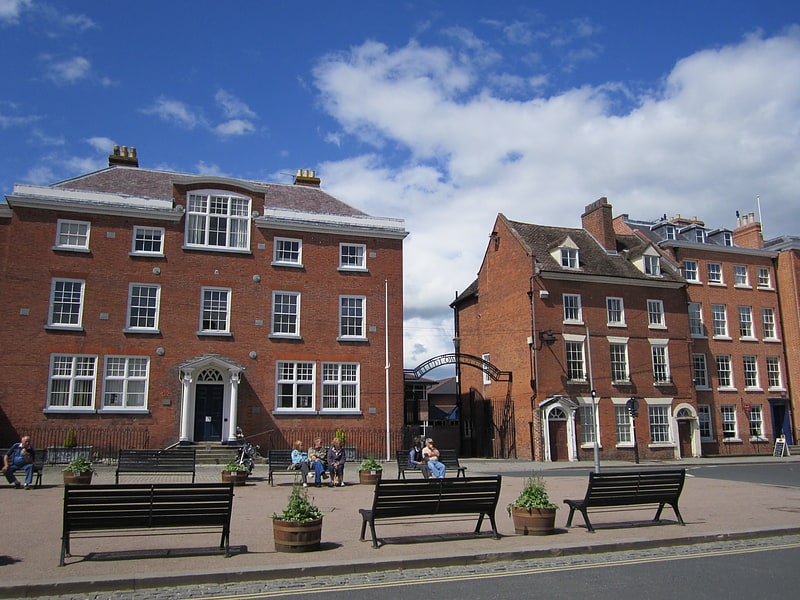
College in Ludlow, England. Ludlow College is a sixth form college situated in the heart of Ludlow, Shropshire, England. It now forms part of the Herefordshire and Ludlow College, though retains its own identity.[8]
Address: Castle Square, Ludlow